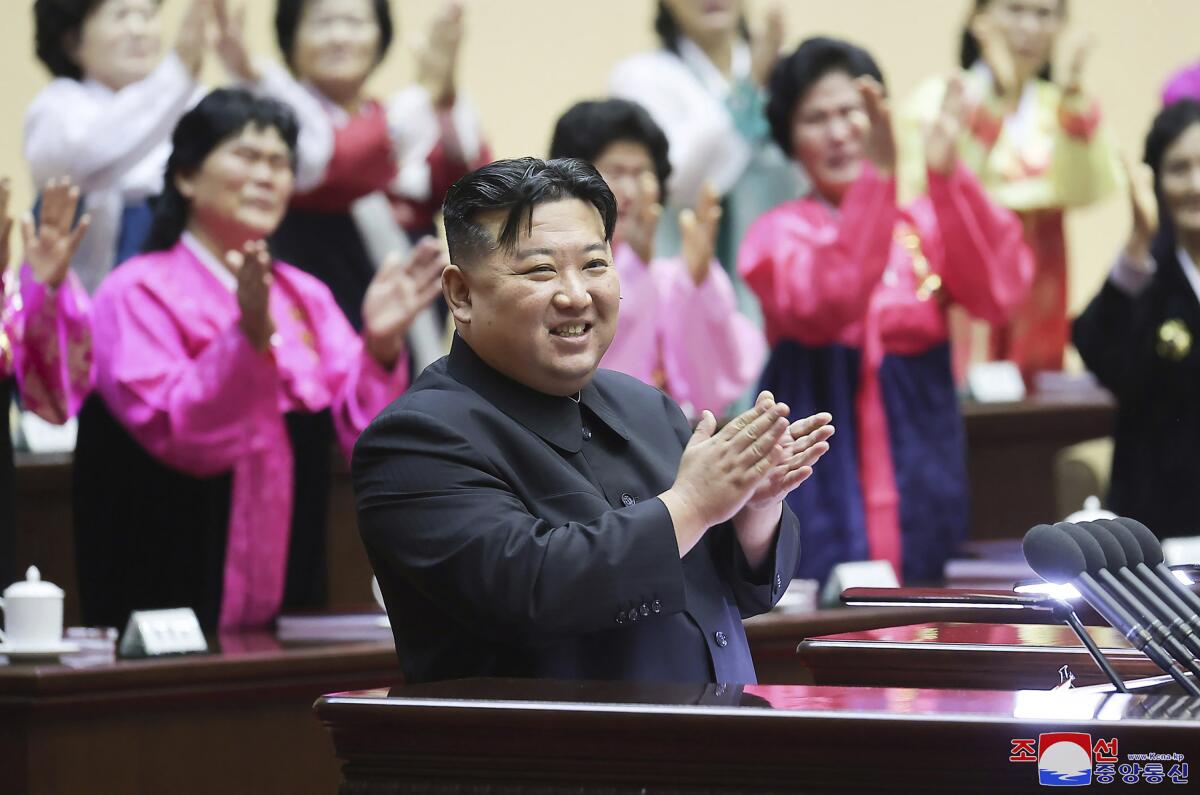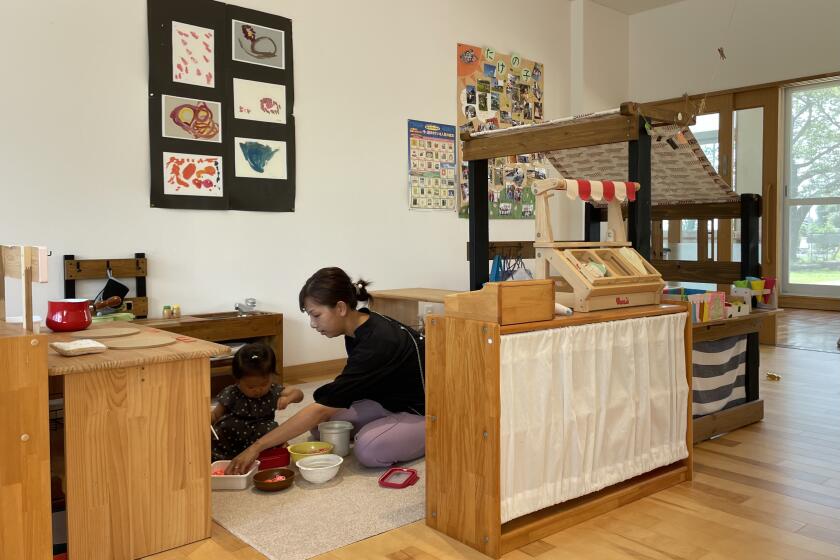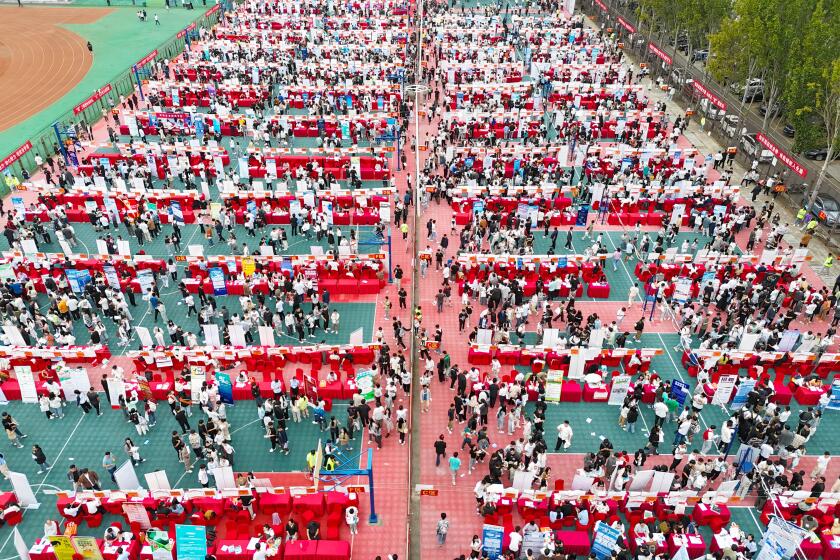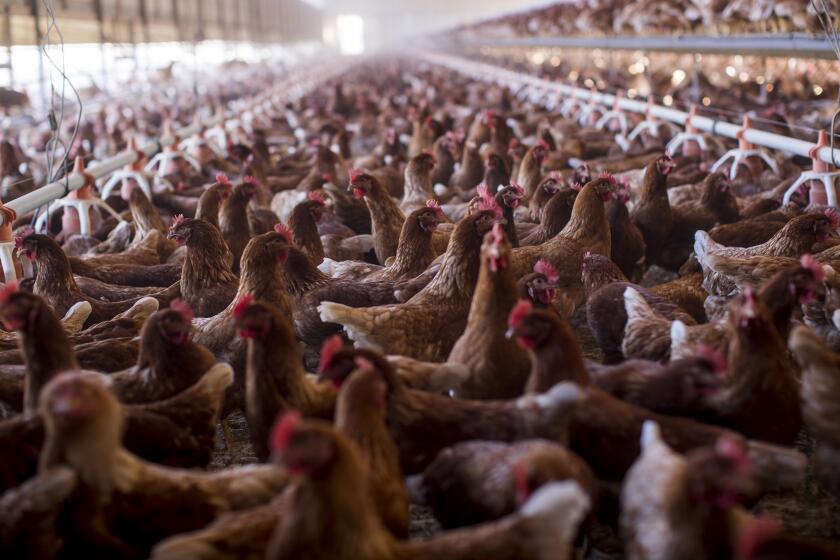North Korean leader calls for women to have more children to halt a fall in birthrate

- Share via
SEOUL — North Korean leader Kim Jong Un has said it is a duty of women to halt a fall in the country’s births in order to strengthen national power, state media said Monday, as his government steps up the call for the people to have more children.
While getting a detailed read on North Korea’s population trends is extremely difficult because of the limited statistics it discloses, South Korea’s government assesses that the North’s fertility rate has declined steadily for the last 10 years. That is a concerning development for a country that depends on mobilized labor to help keep its broken, heavily sanctioned economy afloat.
Kim’s latest appeal for women to have more children was made Sunday during the country’s National Mothers Meeting, the first of its kind in 11 years.
“Stopping the decline in birthrates and providing good child care and education are all our family affairs that we should solve together with our mothers,” Kim said in his opening speech.
Japan is confronting a depopulation crisis because of a precipitously falling birth rate, but one mountain town has bucked the trend — spectacularly.
According to South Korea’s government statistics agency, North Korea’s total fertility rate, or the average number of babies expected to be born to a woman over her lifetime, was at 1.79 in 2022, down from 1.88 in 2014. The decline is still slower than its wealthier rival South Korea, whose fertility rate last year was 0.78, down from 1.20 in 2014.
The fall in South Korea’s fertility rate, the lowest in the developed world, is believed to be due to a decaying job market, a brutally competitive school environment for children, traditionally weak child-care assistance and a male-centered corporate culture where many women find it impossible to combine careers and family.
While North Korea is one of the poorest nations in the world, the change in its demographic structure is similar to that of rich countries, some observers say.
“Many families in North Korea also don’t intend to have more than one child these days as they know they need lots of money to raise their kids, send them to school and help them get jobs,” said Ahn Kyung-su, head of DPRKHealth. org, a website focusing on health issues in North Korea.
Alarmed by a plummeting birthrate, Taiwan’s government has set out to help young people meet, marry and have children. But success is elusive.
Ahn, who has interviewed many North Korean defectors, said the smuggling of a vast amount of South Korean TV dramas and movies in the last 20 years that showed an elevated social status for women has also likely influenced women in North Korea not to have many children.
North Korea implemented birth control programs in the 1970s and ‘80s to slow postwar population growth. The country’s fertility rate recorded a major decline after a famine in the mid-1990s that was estimated to have killed hundreds of thousands of people, the Seoul-based Hyundai Research Institute said in a report in August.
“Given North Korea lacks resources and technological advancements, it could face difficulties to revive and develop its manufacturing industry if sufficient labor forces are not provided,” the institute report said.
As unemployment rises in China, some young adults become ‘full-time children’ at home with their parents. Critics call it ‘gnawing on the elderly.’
According to North Korean state media reports this year, the country has introduced a set of benefits for families with three or more children, including preferential free housing arrangements, state subsidies, free food, medicine and household goods and educational perks for children.
South Korea’s statistics agency estimates the North’s population at 25.7 million. The Hyundai institute report said that North Korea was expected to experience a decline in population from 2034 and forecast its population would decrease to 23.7 million by 2070.
Ahn, the website head, said that Kim’s repeated public appearances with his young daughter, Ju Ae, are also likely to be efforts to encourage families. Other experts said the daughter’s appearances were more likely an attempt to show she’s her father’s heir.
Associated Press writer Jiwon Song contributed to this report.
More to Read
Sign up for Essential California
The most important California stories and recommendations in your inbox every morning.
You may occasionally receive promotional content from the Los Angeles Times.













